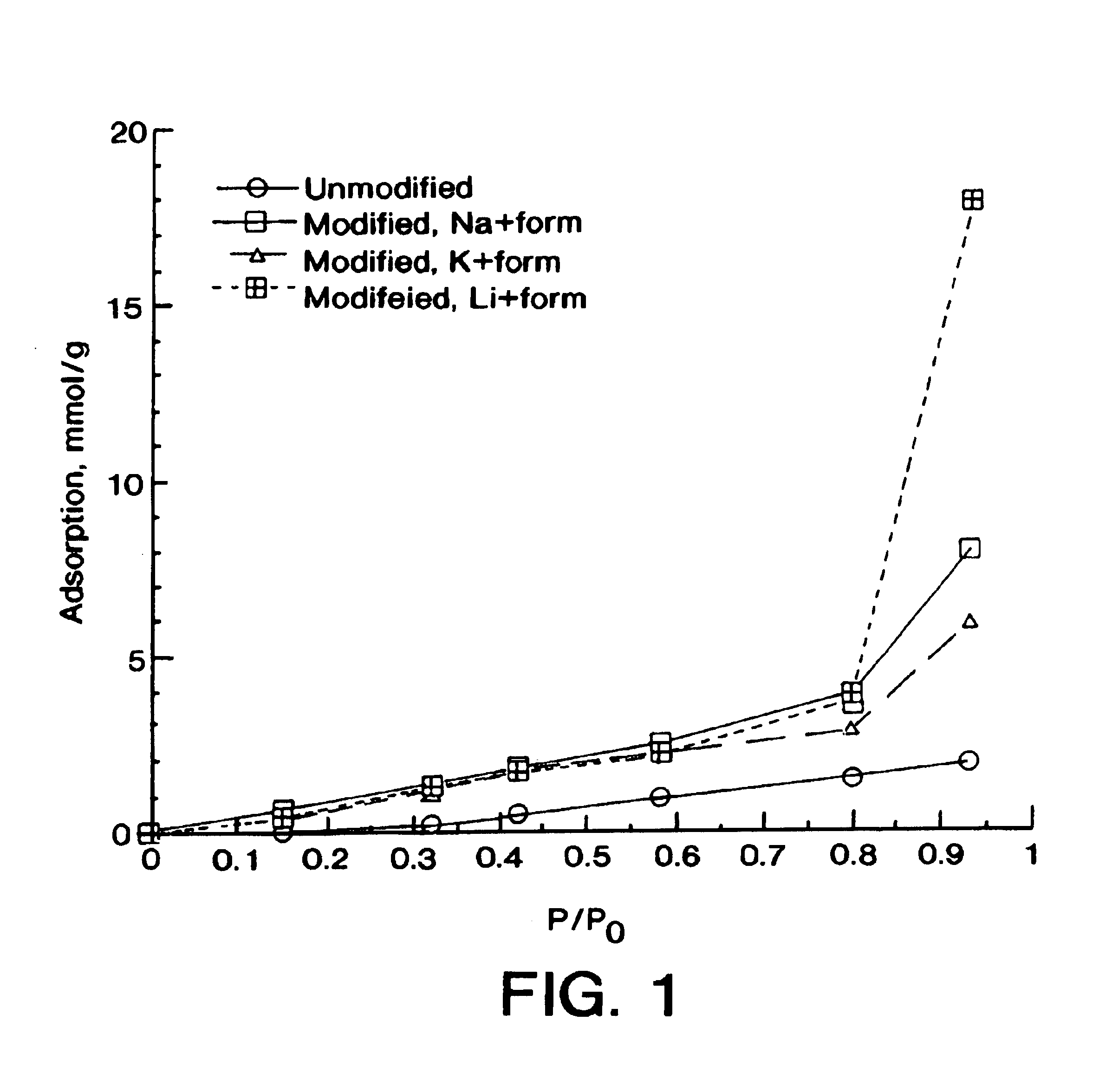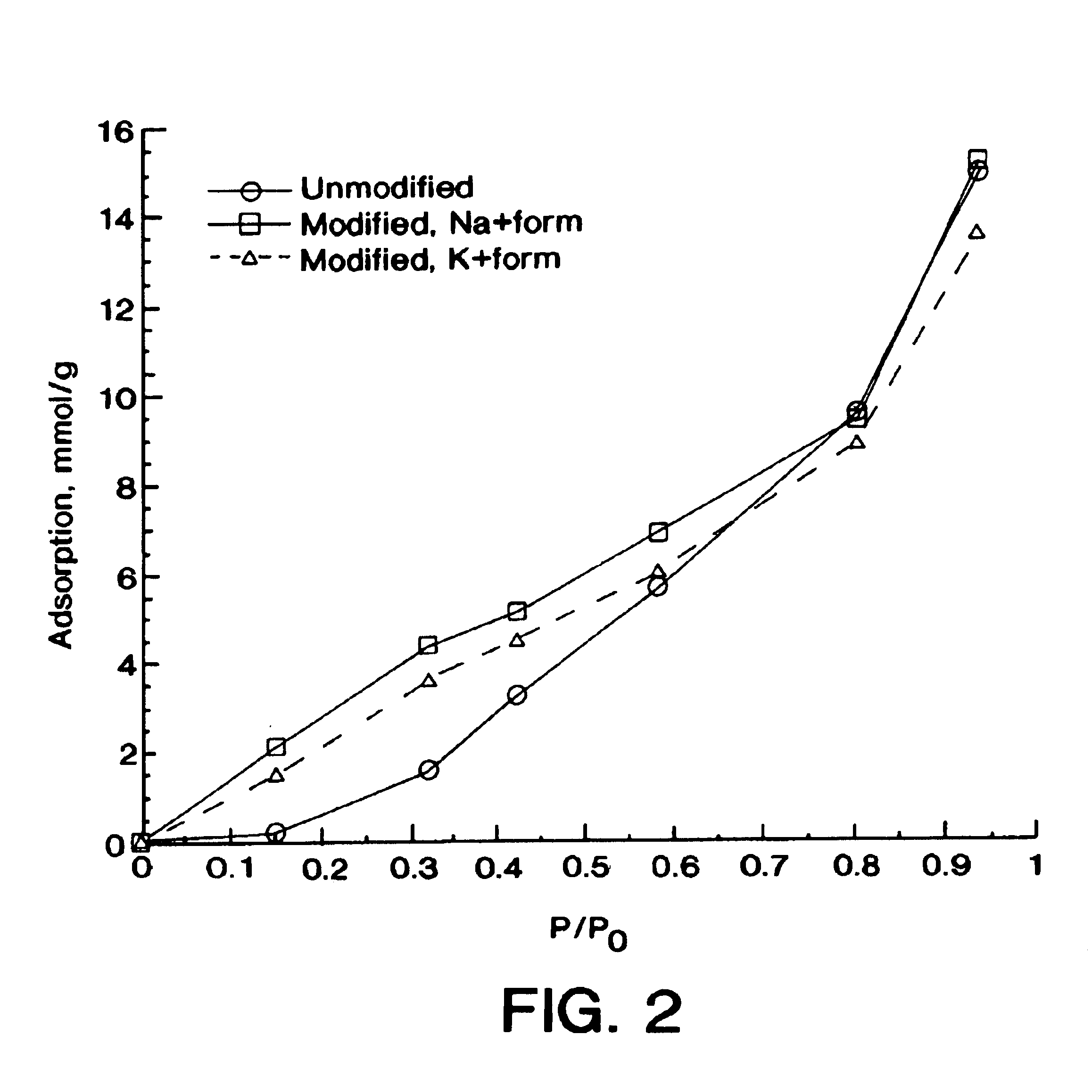Method to adsorb an adsorbate using modified carbonaceous material
a carbonaceous material and adsorption technology, applied in the direction of cation exchanger materials, other chemical processes, separation processes, etc., can solve the problems of limited utility of modification techniques, long adsorption mass transfer zone, and difficult regeneration and energy-intensive, etc., to achieve the effect of not damaging the structure or making the adsorbent more friabl
- Summary
- Abstract
- Description
- Claims
- Application Information
AI Technical Summary
Benefits of technology
Problems solved by technology
Method used
Image
Examples
example 1
Pellets of Black Pearls® 430 carbon black and Darco S51 activated carbon from Norit were surface-modified using the following procedure:
Surface Modification of Black Pearls® 430 Carbon Black
A dispersion of 5 ml of water dilutable phenol-formaldehyde thermosetting resin (Schenectady International, Schenectady, N.Y.) in 50 mL of water was mixed with 50 g of Black Pearls® 430 carbon black (available from Cabot Corp., Boston, Mass.). The mixture was pressed in 1 g portions using a 0.25 inch stainless steel die at a pressure of 5000 psi. The pellets were heated under flowing argon at 110° C. for one hour and at 135° C. for one hour to cure the resin. The temperature was then raised under flowing argon at 20° C. / min until a temperature of 650° C. was reached. The temperature was then held at 650° C. for three hours and cooled under flowing argon. The pellets were then crushed into pieces about 1 mm by 2 mm.
An aqueous solution of 0.81 g of sodium nitrite in about 1 g of water was added to ...
PUM
| Property | Measurement | Unit |
|---|---|---|
| temperature | aaaaa | aaaaa |
| temperatures | aaaaa | aaaaa |
| pKa | aaaaa | aaaaa |
Abstract
Description
Claims
Application Information
 Login to View More
Login to View More - R&D
- Intellectual Property
- Life Sciences
- Materials
- Tech Scout
- Unparalleled Data Quality
- Higher Quality Content
- 60% Fewer Hallucinations
Browse by: Latest US Patents, China's latest patents, Technical Efficacy Thesaurus, Application Domain, Technology Topic, Popular Technical Reports.
© 2025 PatSnap. All rights reserved.Legal|Privacy policy|Modern Slavery Act Transparency Statement|Sitemap|About US| Contact US: help@patsnap.com



